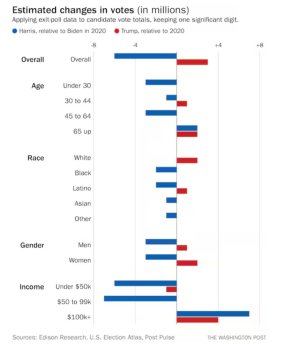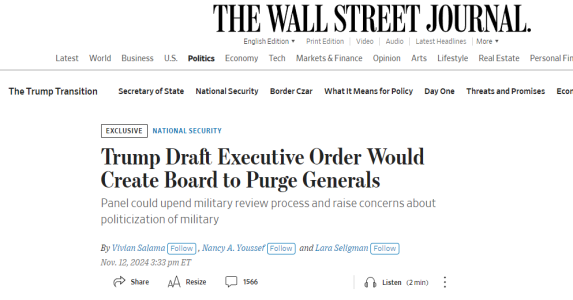Why 100-year-old borders drawn by two Europeans still define the Middle East
The Sykes-Picot agreement, reached a century ago this week, delineated national borders based more on British and French interests than local conditions. But it has proven surprisingly resilient.
By Nicholas Blanford, Correspondent MAY 16, 2016
Beirut, Lebanon
One December morning in 1915, with World War I not yet 18 months old, a young diplomat stalked into the offices of the British prime minister in London, carrying with him a map and a bold plan for the future of the Middle East once the allies had defeated Germany and the Ottoman Empire.
Standing before Britain’s top leaders, Sir Mark Sykes slashed his finger across his map of the region and, according to James Barr’s book “A Line in the Sand,” said, “I should like to draw a line from the ‘e’ in Acre [in then-Palestine, on the Mediterranean] to the ‘k’ in Kirkuk [in what would become Iraq].”
Britain, he said, would retain control of the territory to the south of the line, while the French would have Greater Syria north of the line.
That blunt proposal to divide the Middle East into British and French spheres of influence was the seed that would lead a few years later to the birth of the modern Middle East and with it decades of political turmoil, wars, sectarian bloodletting, socioeconomic disparities, and the interminable Arab-Israel conflict.
The Middle East today is undergoing its greatest political and social upheaval since the agreement negotiated by Sykes and the French statesman Francois George Picot was signed 100 years ago this week. The conflicts roiling the region, particularly those in Syria and Iraq, have thrown into question whether the post-World War I nation-states can survive or whether new entities will emerge from the turmoil in the years ahead.
In June 2014, the self-declared Islamic State (IS) bulldozed through an earth berm marking the border between Iraq and Syria. A video of the operation was entitled “the end of Sykes-Picot.”
“This is not the first border we will break, we will break other borders,” an ISIS gunman said in the video.
Yet, despite ISIS’s bold promise and the collapse of governance in several states in the Arab world, including Yemen and Libya, the borders themselves remain surprisingly durable. In Syria, both the regime of President Bashar al-Assad and the opposition continue to aspire to a unitary state rather than a much mooted break-up into mini states to better reflect the country’s sectarian demographics. And Iraq continues to hold together, albeit shakily and with the Kurdish north practicing some autonomy from Baghdad.
“Although far removed from Sykes-Picot, one thing we have learned from the colonial carve-up in Africa is that ‘artificial states’ tend to persist on the map, even in cases of genocidal rampages within individual states. I suspect this will be true in the former Ottoman provinces of the Levant and Mesopotamia as well,” says Fred Hof, director of the Atlantic Council’s Rafik Hariri Center for the Middle East and an expert on the post-World War I boundaries of Lebanon, Syria, and Palestine.
That durability lies partly in the fact that borders agreed to by treaty tend to remain in place. Furthermore, tinkering with international boundaries cannot be done unilaterally but requires the consent of the state on the other side of the line, which can complicate the process.
“Questioning settled boundaries inevitably invites nettlesome counterclaims, especially in regions where ethnic or tribal groups straddle borders and minority populations have ended up behind the lines when the maps were finalized,” wrote Steven Simon, a senior fellow at the Middle East Institute, in an August 2014 article for Foreign Affairs magazine.
Straight lines across the desert
The 1916 Sykes-Picot map of the division of territorial spoils between Britain and France looks very different from a map of the modern Middle East. Yet from these crude pencil slashes, the borders of future Arab states – and one Jewish state – would emerge.
The process of confirming those borders would take years or decades. Iraq only recognized its southern border with Kuwait in 1991 after Operation Desert Storm forces drove out Saddam Hussein’s army. After more than 60 years of independence, Lebanon and Syria still have not demarcated their joint border, a legacy of Syria’s traditional unhappiness with the French decision to wrench Lebanon from the motherland in 1920. And Israel’s borders have varied considerably through occupation of, and withdrawal from, neighboring Arab territory. Last month, Israeli Prime Minister Benjamin Netanyahu declared that the Golan Heights, seized from Syria in 1967 and internationally recognized as occupied territory, would forever remain part of Israel.
Few of the borders follow natural geographic features. Lebanon’s border with Syria is a rare exception, following a river in the north and the watershed of a rugged stretch of mountains to the east. But for the most part, the European powers simply drew straight lines cutting across endless vistas of desert. One stretch of Syria’s southern border with Jordan and Turkey runs 260 miles in an imperious straight line, most of it marked only by a bulldozed earth berm a few feet high.
When Sykes and Picot hammered out their agreement, the strategic interests of the British and French took precedence over the tangled sectarian and ethnic demographics of the region. Britain had already promised Hussein ibn Ali, the emir of Mecca, an Arab kingdom in exchange for his military support against the Ottoman Turks in World War I. The Arabs of Syria were fiercely anti-French and rejected the notion of future French rule.
But the Sykes-Picot Agreement betrayed Britain’s earlier pledge to the Arabs and ignored the anti-French sentiment in Syria.
By the end of World War I in 1918, Faisal, Emir Hussein’s son, had seized Damascus and proclaimed himself king of Syria. He was quickly ousted by France, which had won the mandate over Syria and the newly created state of Lebanon. As a consolation prize, Britain handed Faisal the new state of Iraq which grouped the cities of Baghdad, Basra, and Mosul. Faisal’s brother, Abdullah, was given Transjordan, a tranche of desert wedged between Iraq, Palestine, and Syria, the borders of which Winston Churchill famously boasted he drew up “with a stroke of a pen, one Sunday afternoon.” Both Iraq and Transjordan (which later became Jordan) as well as Palestine were placed under British mandate.
Pan-Arab unity and strongman rule
The years between the two world wars were marked by frequent revolts against the mandatory powers. Arab nationalist parties, with their anticolonialist agenda, rose in popularity, aspiring to erase the Anglo-French constructs in favor of pan-Arab unity.
After Britain and France retreated from the Middle East in the 1940s, Arab nationalism began its march. The post-World War I monarchies in Iraq and Jordan were toppled and new Arab nationalist leaders mounted coups and counter-coups. The region’s enormous oil and gas reserves helped turn the Middle East into one of the global battlefields of the cold war. And the Arab-Israeli conflict amplified the instability.
What emerged by the 1970s was the rule of the strong man – Hafez al-Assad in Syria, Jamal Abdul Nasser in Egypt, Saddam Hussein in Iraq, Muammar Qaddafi in Libya.
But the fervent Arab nationalist ideologies that originally inspired these regimes soon ossified. Dissent was crushed, rivals to the leadership eliminated, and in some countries power became an inheritable family business. Surging population growth, inefficient bureaucracies, social and economic inequity and decaying infrastructure added to the malaise.
A key factor that contributed to the often dysfunctional, dictatorial, and corrupt systems is that the Levant region had not experienced self-governance for centuries, having been ruled over by the Ottoman Empire.
“The problem … is this region, … which is effectively four or five big cities [such as Damascus, Aleppo, Baghdad, and Mosul] with no center,” says Paul Salem, director of studies at the Middle East Institute in Washington. “Hence much of the problems are deeper than where did Sykes and Picot draw the line, and [that] if they had drawn it 20 miles further east all would have been fine.”
Decades of atrophy in the Arab world exploded into protest in 2010, first in Tunisia before spreading to Egypt, Libya, Yemen, Bahrain, and Syria, with the latter mired in a brutal war that has left more than a quarter of a million people dead.
Yet many citizens of these turbulent states continue to resist the notion of dismemberment, viewing such calls as a Western plot to weaken the Arab world.
The Iraqi view
Iraqi leaders, including the Shiite-led government, believe Iraq needs to hold together.
“We are surrounded by enemies – Israel, Saudi Arabia, and America,” says Intisar Mohammad, a trainer for Iraq’s national women’s judo team, and one of the few women in a protest camp, in Baghdad’s Tahrir Square, of followers of Shiite cleric Moqtada al-Sadr. “This is a very old plan to divide Iraq,” she says of talk that the country could split into regions. “This is not an Iraqi idea – it came to us from the outside.”
Many Sunnis, however, have felt marginalized in Iraq since the downfall of Saddam Hussein and the empowerment of the majority Shiite community. Liqa’a al-Wardi, a member of parliament from the Sunni city of Fallujah, says some Sunnis see the idea of an autonomous region as their salvation.
“Iraqis want to remain one country, not split into regions, but the social and political conflict in Iraq has made people loyal to their tribes, their regions, and their sect [rather than Iraq],” she says. “People in Anbar think the government is against them – they see a Sunni region as an issue of survival.”
Arguably, the biggest loser from the post-World War I partition of the Middle East is the Kurdish community, the largest ethnic group in the world without a state, with some 40 million people spread across northern Iraq, northwestern Iran, and northeastern Syria.
While Kurds have had different experiences in each country, a unifying ambition of rewriting boundaries to create “Greater Kurdistan” has long been a dream. Many Kurds now wonder if the current disintegration in Syria and Iraq, and the war between Turkey and the militant Kurdistan Workers Party (PKK) that resumed last July, won’t lead to a de facto new nation by default.
“The Kurds feel … the moment to redress a historical injustice is coming soon, and the Sykes-Picot anniversary is just a reminder that the Kurds have spent a century oppressed,” says David Phillips, a professor at Columbia University and author of “The Kurdish Spring: A New Map of the Middle East.”
Signs of dramatic change have been many. When IS swept into northern Iraq and seized Mosul in June 2014, Kurdish peshmerga forces took full control of the oil-rich city of Kirkuk and swaths of territory long disputed with the central government in Baghdad. Within weeks, Massoud Barzani, president of the semi-autonomous Kurdistan Regional Government in northern Iraq, declared for the first time that the time had come for independence.
In northern Syria, Syrian Kurds created three enclaves and exercised a degree of self-rule in a region they call Rojava. But it was the battle of Kobane in October 2014 – in which Syrian Kurds were bolstered by Kurdish fighters from both Iraq and Turkey, along with US airstrikes, to defeat the Islamic State – that raised again questions of a “Kurdish moment” emerging from the current regional turmoil.
“I don’t see Iraqi Kurdistan staying in Iraq,” says Mr. Phillips. “I think they will have a referendum on independence and they will allow a year from the date of the referendum to negotiate a friendly divorce from Baghdad and a modus vivendi with Turkey and others. And when they declare independence, the other [Kurdish] communities [in Syria and Iraq] are going to want to hook up to them.”
Jordan's precautions
Jordan, which lies at the heart of the region, generally has been spared the tsunami of the Arab Spring. But it is taking precautions to avoid overspill. Police and gun-toting soldiers stop vehicles at checkpoints 35 miles from the desert border with Iraq in the east, and 15 miles from Syria to the north. For 30 miles along the main highway north to Syria, Jordanians are hard to find. Grocery-baggers, shopkeepers, farmers, and construction workers speak with thick Syrian accents; entire villages have uprooted and moved south across the border into Jordan, with Syrians now accounting for 20 percent of Jordan’s population.
Even as the Syrian influx changes the demographics of northern Jordan, the country’s 233-mile border with Syria is effectively shifting northward. According to the Jordanian military, Syria’s rebel factions and regime forces maneuver at a minimum distance of eight to 28 miles from the Jordanian border and have been “warned” that they could be attacked if they approach within four miles of the frontier.
As a result, Jordan’s border has become a de-facto safe zone for more than 60,000 Syrian refugees. They are unable to return home, yet unable to enter Jordan due to concerns over infiltration by IS. That adds to Jordan’s burden of responsibility, which already includes more than 2 million Palestinian refugees.
Officials and palace insiders freely admit that Jordan’s borders mean less and less as the kingdom increasingly takes on the economic and humanitarian responsibilities of Sunni Arabs in Syria, Iraq, and the West Bank.
“I doubt they [the Sunnis of neighboring states] will be annexed to Jordan, but due to economic dependency and humanitarian responsibility, Jordan is already playing an unofficial administrative role,” says Jawad Anani, a Jordanian senator.
Lebanon's power-sharing
Lebanon suffered its own upheaval three decades ago, a bitter 16-year civil war that saw the country divided into sectarian cantons. Yet when the war ended in 1990, Lebanon’s borders with Syria and Israel remained unchanged and the sectarian cantons were dissolved as the state resumed authority in Beirut. For Arab nationalists, sectarianism is anathema, but in Lebanon it is the basis for a complicated power-sharing system. Some argue that Lebanon’s sectarian system of governance is a potential model for other countries composed of multiple sects and ethnicities.
Yet, while Lebanon’s system has helped keep the peace for a quarter century, it is inherently dysfunctional – it stifles progress and ensures that Lebanese citizens view each other through the prism of their respective religious affiliations.
How Lebanon’s Arab neighbors will emerge from their own wars and crises remains to be seen, and could take years or even decades. In the meantime, Mr. Salem predicts that strife-torn countries, Syria in particular, will devolve into cantons possibly with “their own informal taxes, customs tariffs, and informal administrations … de facto cantons, like we had in the Lebanese civil war.”
“But I don’t see any de jure movement internationally to formalize [each canton] into a state,” he says.
Ultimately, the changes that could unfold across the Middle East may have less to do with collapsing the borders of the post-World War I states and creating new entities, and more with fundamental changes in governance within existing frontiers.
“With the possible exception of Kurdistan emerging from northern Iraq … I do not see states breaking up,” says Mr. Hof. “If, however, they are to be stable, then political power hoarded in capital cities and exercised by incompetent, corrupt elites must devolve to provinces, cities, towns, and villages. In this way, the post-mandate promise of self-government can become a reality."
Scott Peterson in Istanbul, Turkey, Jane Arraf in Baghdad, and Taylor Luck in Amman, Jordan, contributed to this report.







































